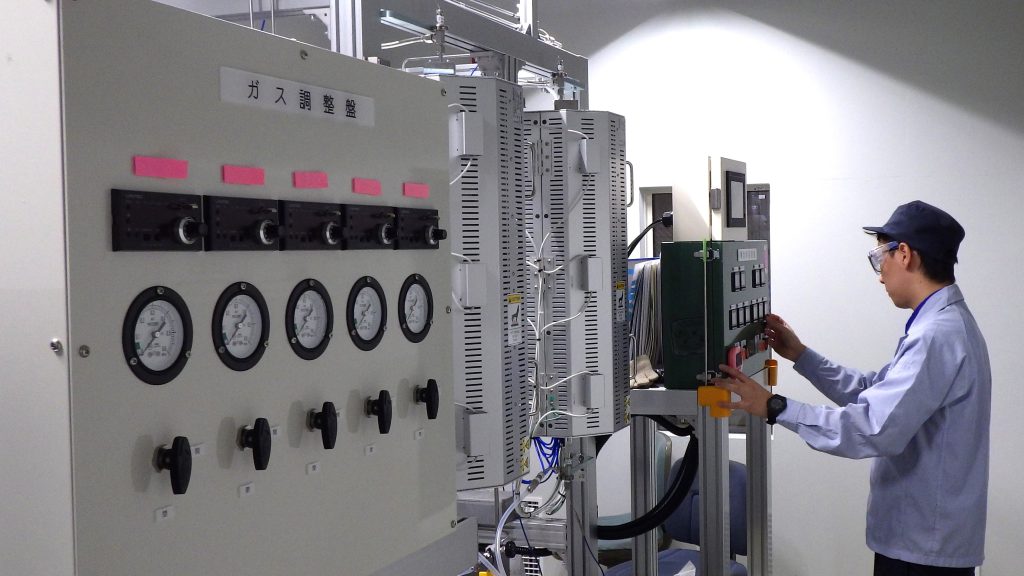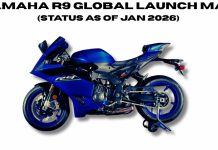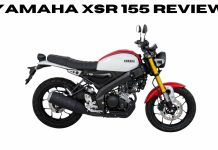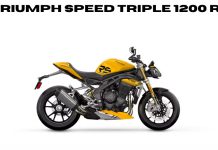Yamaha’s ambitious goal of achieving carbon neutrality by 2050 has set the stage for transformative changes across its entire operation.
Central to this initiative is the shift to hydrogen-powered processes at its Morimachi Factory, specifically in the melting and heat treatment of aluminum alloy components for motorcycles.
This innovation marks a significant departure from traditional gas-fired or electric resistance crucible furnaces.Which rely on fossil fuels or grid electricity, often not carbon-neutral.
The Urgency of Carbon Neutrality
In the global effort to combat climate change, carbon neutrality has become a crucial objective for corporations.
Yamaha’s commitment to this cause is not just about meeting regulatory requirements but about leading the way in sustainable manufacturing.
The automotive giant’s strategy includes a comprehensive plan to reduce emissions across all aspects of its business, from production to transportation and product use.

Hydrogen: The Game Changer
Hydrogen gas, as an alternative to fossil fuels and grid electricity, presents a revolutionary shift in industrial processes.
Traditionally, manufacturers use gas-fired or electric resistance crucible furnaces. Which are either powered by fossil fuels or electricity from the power grid.
Depending on the source, this electricity might not be carbon-neutral. In contrast, hydrogen has the potential to offer a cleaner, more efficient solution.
Yamaha’s Current Practices
Currently, Yamaha uses natural gas-powered furnaces for melting aluminum alloys. The company admits that electric-powered furnaces, while cleaner, are not as efficient due to the immense heat required for these processes.
This realization has propelled Yamaha towards exploring hydrogen as a viable alternative.
Development Timeline
Yamaha plans to begin the development of technology and techniques for using hydrogen gas in melting aluminum alloys by 2025.
By the end of 2026, the company hopes to start implementing this technology in its manufacturing facilities.
The ultimate goal is to adopt this manufacturing process across all Yamaha facilities, both in Japan and worldwide, by 2027.
Stages of Implementation
The implementation of hydrogen-powered manufacturing techniques represents the first stage of Yamaha’s journey towards carbon neutrality. This stage focuses on eliminating emissions produced directly from business activities.
The subsequent stages will address emissions along the company’s value chain, including product use, deliveries, and transportation. These efforts will involve third-party suppliers, making the goal of carbon neutrality a collective endeavor.
Global Impact of Yamaha’s Sales
To appreciate the potential impact of Yamaha’s efforts, consider the company’s sales volumes. In 2023 alone, Yamaha sold more than 4.8 million two-wheelers worldwide.
If these machines are currently manufactured using fossil fuels, the shift to hydrogen could significantly reduce global emissions.
Even if a fraction of these vehicles were produced using hydrogen-powered processes, the environmental benefits would be substantial.
Yamaha’s Leadership in Sustainability
Yamaha’s proactive approach to environmental sustainability sets it apart from many other manufacturers. By pioneering advancements in manufacturing technology, the company is not only reducing its own carbon footprint but also setting a benchmark for the industry.
This leadership is likely to inspire other companies to adopt similar practices, ultimately contributing to a more sustainable and environmentally friendly future.
Hydrogen-Powered Melting and Heat Treatment
The core of Yamaha’s new initiative involves the use of hydrogen gas for melting and heat treatment furnaces. These furnaces are essential for casting aluminum alloy components, a critical part of motorcycle manufacturing.
Hydrogen, when used in these processes, offers several advantages over traditional fuels.
Efficiency and Environmental Benefits
Hydrogen-powered furnaces can reach the high temperatures required for melting aluminum alloys more efficiently than electric-powered alternatives. This efficiency translates to lower energy consumption and reduced emissions.
Moreover, hydrogen combustion produces only water vapor as a byproduct, making it an exceptionally clean energy source.
Overcoming Technological Challenges
The transition to hydrogen-powered processes is not without challenges. Developing the necessary technology and infrastructure to use hydrogen in industrial applications requires significant investment and research.
Yamaha is committed to overcoming these challenges through innovation and collaboration with industry partners.
Collaboration and Innovation
Yamaha’s journey towards carbon neutrality involves collaboration with various stakeholders, including technology providers, research institutions, and government agencies.
By working together, these entities can accelerate the development and implementation of hydrogen-powered technologies. Yamaha’s leadership in this area can serve as a catalyst for broader industry adoption.
The Road Ahead: From Development to Deployment
As Yamaha begins developing hydrogen-powered technology in 2025, the focus will be on creating efficient and reliable systems for industrial use.
The company plans to conduct extensive testing and validation to ensure that these systems meet the high standards required for mass production.
By the end of 2026, Yamaha aims to have these technologies ready for deployment in its manufacturing facilities.
Scaling Up: Global Implementation by 2027
Yamaha’s vision extends beyond its Japanese facilities. The company plans to roll out hydrogen-powered manufacturing processes globally, with full adoption expected by 2027.
This global implementation will require significant logistical coordination and investment but promises substantial environmental benefits.
Impact on the Motorcycle Industry
The adoption of hydrogen-powered processes by a major manufacturer like Yamaha could have far-reaching implications for the motorcycle industry.
As one of the largest producers of motorcycles, Yamaha’s shift towards sustainability could influence other manufacturers to follow suit. This collective effort could lead to significant reductions in industry-wide emissions.
Beyond Manufacturing: The Value Chain
Yamaha’s commitment to carbon neutrality extends beyond manufacturing. The company is also focusing on reducing emissions throughout its value chain. This includes product use, deliveries, and transportation.
By addressing emissions at every stage, Yamaha aims to create a holistic approach to sustainability.
Product Use: Innovating for Efficiency
Reducing emissions from product use involves creating more efficient and environmentally friendly motorcycles.
Yamaha is investing in the development of electric and synthetic fuel-powered vehicles to complement its hydrogen-powered manufacturing processes.
These innovations aim to provide consumers with sustainable alternatives without compromising performance or reliability.
Deliveries and Transportation: Greening the Supply Chain
Yamaha’s sustainability initiatives also target the logistics of delivering products to market.
This includes optimizing transportation routes, using more fuel-efficient vehicles, and exploring alternative fuels for shipping. By greening its supply chain, Yamaha can further reduce its overall carbon footprint.
Third-Party Suppliers: A Collective Effort
Achieving carbon neutrality requires collaboration with third-party suppliers. Yamaha is working closely with its suppliers to ensure that they also adopt sustainable practices.
This collective effort is crucial for reducing emissions across the entire value chain.
Consumer Impact: Sustainable Choices
As Yamaha implements its sustainability initiatives, consumers will have more environmentally friendly choices.
Hydrogen-powered manufacturing processes and the development of electric and synthetic fuel-powered vehicles will offer consumers options that align with their values.
This shift could drive demand for sustainable products and encourage other manufacturers to adopt similar practices.
The Role of Government and Policy
Government policies and regulations play a significant role in the transition to carbon neutrality. Supportive policies can facilitate the adoption of hydrogen-powered technologies and other sustainable practices. Y
amaha’s efforts align with broader governmental goals for reducing emissions and combating climate change.
Long-Term Vision: A Sustainable Future
Yamaha’s long-term vision for carbon neutrality encompasses all aspects of its business. From manufacturing to product use and transportation, the company is committed to reducing its environmental impact.
This comprehensive approach positions Yamaha as a leader in sustainability within the automotive industry.
Conclusion: Leading the Charge Towards Sustainability
Yamaha’s ambitious goal of achieving carbon neutrality by 2050 is a testament to its commitment to sustainability. By pioneering hydrogen-powered manufacturing processes, the company is setting a new standard for the industry.
As Yamaha continues to innovate and collaborate, it paves the way for a more sustainable and environmentally friendly future.
In summary, Yamaha’s path to carbon neutrality involves significant changes in manufacturing processes, particularly the adoption of hydrogen-powered furnaces.
These initiatives represent a critical first step in a broader strategy to reduce emissions across the company’s value chain. As Yamaha leads the charge towards sustainability, it sets an example for the entire automotive industry to follow.


































